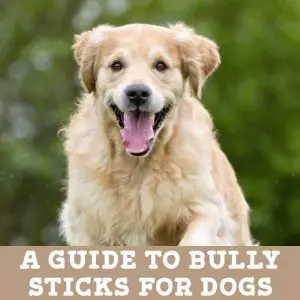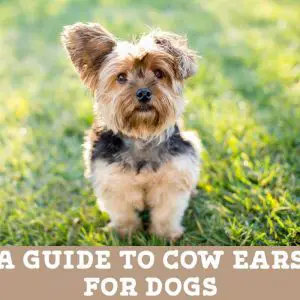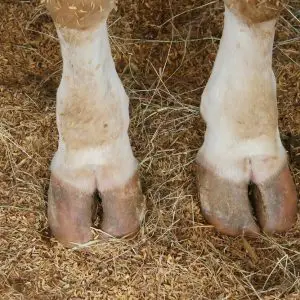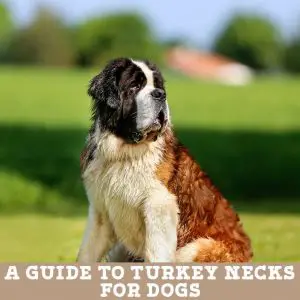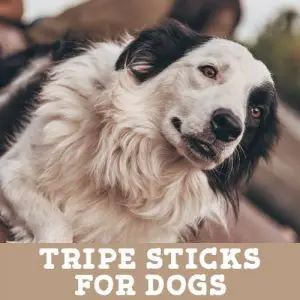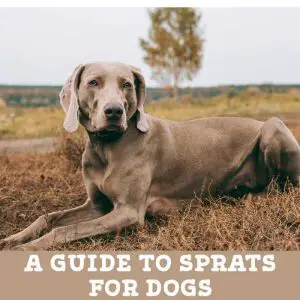Are you looking for THE BEST dental chew on the market? But fed up with all the artificial ingredients in pet-store dental sticks? Maybe your vet has just told you that your dog needs better dental care? Or maybe you want to prevent your dog from needing a scale and polish in the future? Well, ostrich tendons might be for you!
In this article we will look at where ostrich tendons come from, how they’re made, what their benefits are and why you might want to give one to your dog.
Key facts
Ostrich tendons are an excellent natural option for a long lasting chew
They will help clean your dog’s teeth and provide plenty of entertainment.
They are also packed full of nutrients and are an excellent choice for dogs with allergies because they are a novel protein
What are Ostrich Tendons?
Ostrich tendons come from the leg tendons of ostriches which have been farmed for meat. They are a by-product of the commercial meat industry, and have been saved from the carcass for canine consumption. Most ostriches come from South Africa, however there is also a smaller ostrich farming industry in the US.
Ostrich tendons are most commonly available as dried products. They are slow-dried with a low heat, and also sometimes wood-smoked. They can be purchased braided or “as is”, depending on how tough a chew you’d like. Braided ostrich tendons take a little longer to get through.
If you’re lucky, you might find fresh ostrich tendons at a local market or butcher, which you can dehydrate in the oven yourself on a low heat (70-80 degrees Celsius for over six hours). However they do shrink dramatically, and therefore you will want to start off with large fresh tendons to end up with a normal sized chew.
Benefits of Ostrich Tendons for Dogs
Ostrich tendons are completely natural products with no additives. They are high in protein, low in fat, low in cholesterol and rich in calcium and iron.
On a dry matter basis, they have the following approximate nutritional makeup:
Dried Ostrich Tendons Nutrition
The main draw to ostrich tendons are their dental health properties. They are initially firm to chew, which creates an abrasive action against the teeth, helping to remove plaque. Once they have been chewed and softened, it becomes more fibrous. The fibres act like dental floss to get out that stubborn food build-up.
In addition to the dental benefits, ostrich tendons can keep your dog distracted for anywhere between 20 minutes and a whole day or more (depending on how strong a chewer they are). Chewing also stimulates the release of endorphins which help to calm nerves and anxiety, so if your dog is a worrier, they might benefit from these chews.
Finally, ostrich is a novel protein, which many dogs have not tried before. Therefore, it is less likely to cause an allergic reaction. As a result, it is classified as hypoallergenic, and even dogs with food allergies usually tolerate ostrich very well.
Disadvantages & Risks of Ostrich Tendons for Dogs
A Very Safe Treat
There’s nothing inherently unsafe about ostrich tendons for dogs. The first time you feed one may result in a runny tummy for some dogs so it might be worth introducing them slowly.
Ostrich tendons are high in protein and rich in nutrients, so if your dog consumes a lot when he is not used to it, it might cause him to have a mild runny tummy. Therefore, gradually introduce it, by giving smaller tendons first, or taking it away after a period of time if not finished.
Other than that, ostrich tendons are very safe for dogs and rarely cause an issue.
Remember that even though ostrich tendons are low in fat, they still contain calories, so if your dog is overweight, it is worth limiting his consumption of any treat to aid him achieve the correct weight.
Even if your dog is not overweight, ostrich tendons will still contribute to your dog’s daily energy needs, so remember to remove some of your dog’s food from his bowl to make up for the added calories from the tendon.
Ostrich Tendons for Puppies

Puppies can have ostrich tendons from 12 weeks old. They can be an excellent option for preventing your puppy from chewing on furniture when they are teething, and will help soothe sore gums. In addition to that, ostrich chews are not rock-hard, so they will not damage delicate puppy teeth.
It is important to ensure your puppy has ostrich tendons in moderation though. While the protein content is excellent for providing the building blocks for growing muscles, ostrich tendons also have a high calcium content, and ideally puppies should receive their calcium requirement from a balanced, commercial puppy food. Therefore one or two small tendons per week as a puppy is plenty, which can be increased when your dog is an adult.
Alternatives to Ostrich Tendons
Thinking about ostrich tendons, but not quite sold? Here are some alternatives:
- Dental sticks: You can buy dental sticks from pretty much any pet store, and they are an ideal texture to remove plaque from your dog’s teeth as he bites through them. They are also a delicious treat. They have quite a few downsides though; they don’t last very long, they are not natural, they are very high in calories, and they often have very vague ingredients meaning you never really know what’s in them.
- Antlers: These can be relatively expensive, but for the amount of time your dog will spend gnawing at an antler, it is well worth it. Antlers are all-natural, and are excellent for your dog’s dental health. In addition to that, they don’t add calories to your dog’s diet, as your dog doesn’t ingest them. Therefore they are suitable for dogs with allergies, and for dogs who are overweight.
- Yakers: Originally from the Himalayas, these milk sticks are compressed blocks of yak milk which have been smoke-dried for about a month. Like ostrich tendons, they are rich in protein and calcium, completely natural, incredibly durable and excellent for dental health. Nevertheless, they are much higher in fat, and are not suitable for overweight dogs.
- Bully sticks: Also known as pizzle sticks, bully sticks are made from dried bull penis. They are packed full of protein, and are another natural option for improving your dog’s dental health. However, they are very high in calories and might not be a good option if your dog is overweight.
FAQs
Ostrich tendons are fantastic for dental health. They are initially firm to chew, which creates an abrasive action against the teeth, helping to remove plaque. Once they have been chewed and softened, it becomes more fibrous. The fibres act like dental floss to get out that stubborn food build-up.
Ostrich tendons are extremely safe for dogs. The biggest risk is that if your dog over-indulges they might get a runny tummy so it can be worth giving a smaller amount first.
Ostrich tendons do have a smell to them, which some people find offensive. However, in comparison to other natural chews, such as bully sticks, they are much less intense.
The good news is, tendons are not greasy or messy, as they have a very low fat content, so you don’t have to worry about your carpet getting marks on it.
Ostrich tendons can cause mild diarrhoea if your dog has a sensitive stomach and hasn’t had them before. This is because they are very rich in protein. However, most dogs tolerate them excellently with no gut upsets.
Ostrich tendons rarely cause blockages, as they are not hard products like bones. They also break down in the stomach acid, much like any meat product would. However, you should still supervise your dog with an ostrich tendon to ensure he chews it before swallowing.
Ostrich tendons are by-products of the ostrich meat industry. They are not harvested from wild ostriches, but instead come from ostrich farms. Most of the ostrich is processed for the food industry, and off-cuts such as tendons and unwanted meat are harvested for dog food.



